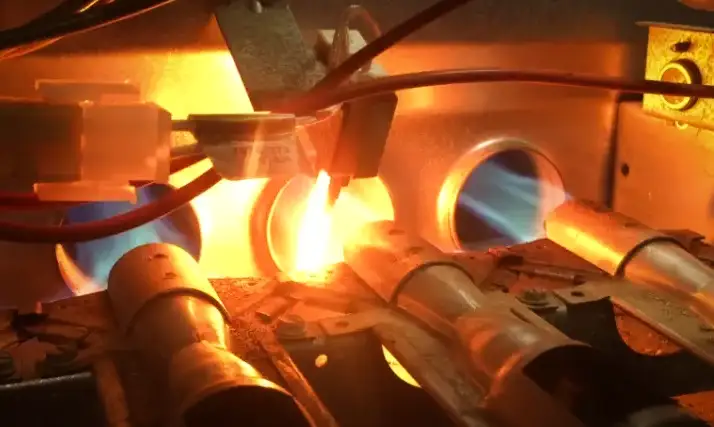Every year in the United States, there are over 400 deaths from unintentional carbon monoxide (CO) poisoning. Many of these deaths are linked to issues with fuel-burning appliances like furnaces. One of the main culprits behind this danger is the presence of a cracked heat exchanger.
Because your safety is our primary concern at A/C Rescue, we put together this informative guide that explores what heat exchangers are, the common causes of cracks, how to detect them, and most importantly, how to prevent and address this serious safety hazard.
Understanding Furnace Heat Exchangers
A furnace heat exchanger plays a pivotal role in maintaining indoor comfort during the cold season. These components are designed to transfer heat from the burning fuel, while preventing the exhaust gases from mixing with the indoor air in your home.
There are two main types of heat exchangers. One, the shell and tube heat exchanger, is most often used because they are more cost-effective. The other, plate heat exchangers, offer a more compact design with higher temperature capabilities.
Regardless of which type you may have, all heat exchangers can become dangerous once a crack develops, because deadly gases like carbon monoxide can begin to leak into your home.
Common Causes of Heat Exchanger Cracks
Understanding what leads to heat exchanger cracks is essential for preventing these hazardous situations:
- Frequent Temperature Fluctuations: The constant expansion and contraction of the metal during heating and cooling cycles can gradually weaken the heat exchanger.
- Inadequate Furnace Maintenance: Regular furnace maintenance is essential to prevent dust, moisture, and heat from contributing to rust and corrosion, which can weaken the metal and potentially cause cracks.
- Age: Heat exchangers have a typical lifespan of around 15 to 18 years. If yours is older, consider a replacement for safety.
- Improper Installation: Incorrect installation practices can lead to cracks. Factors like the Start-up Temperature Rise setting must be appropriately adjusted.
- Manufacturing Defects: Occasionally, heat exchangers may fail due to manufacturing flaws.
Types of Heat Exchanger Cracks
Identifying different types of cracks that can occur in heat exchangers is crucial for assessment and safety:
- Partial (Hairline) Cracks: These cracks may not initially penetrate the total thickness of the metal but can expand over time due to heating and cooling cycles.
- Small (Through) Cracks: These are not immediately visible, but they can be hazardous if exhaust gases start infiltrating your home.
- Large (Full) Cracks: Substantial and clearly visible cracks pose an imminent danger that requires immediate heat exchanger replacement.
Detecting a Cracked Heat Exchanger
Recognizing the signs of a cracked heat exchanger can help you discover the problem before any major damage is done.
A few of the more common things to look for are:
- Accumulation of soot
- Unusual odors
- The presence of water under the furnace
- Dizziness, nausea, sickness, or disorientation in household members
- carbon monoxide detector activation
- corrosion on other furnace components
- visible yellow or orange flame when the furnace is operating.

Preventing Heat Exchanger Cracks
Protecting your home and family from the dangers of cracked heat exchangers requires proactive measures:
- Enroll in a Service Club Membership: Regular maintenance are essential for identifying cracks and other potential issues that may jeopardize your safety.
- Furnace Maintenance: Ensure your furnace is correctly sized and properly installed and that you frequently change your furnace filters.
- Maintain Cleanliness: Keep the utility room clean and ensure that the Start-up Temperature Rise is appropriately configured for your local elevation.
The Cost of Repair
Repairing a cracked heat exchanger is often not feasible, and replacement costs can be significant. Furnace replacement is frequently recommended for units exceeding ten years of age due to the high expenses.
Final Thoughts
A cracked heat exchanger is a serious safety hazard that can lead to carbon monoxide poisoning and potentially fatal consequences. Proactive maintenance, regular professional inspections, and prompt resolution of potential issues are essential to ensuring the safety and efficiency of your furnace.
At A/C Rescue, we are committed to the safety and security of our valued customers. We work hard to keep you informed of ways to enhance the life, efficiency, and safety of the HVAC system in your home. Call us today at (972) 278-6800 if you would like us to stop by and see how we can help safeguard your home and family from the danger of cracked furnace heat exchangers.

